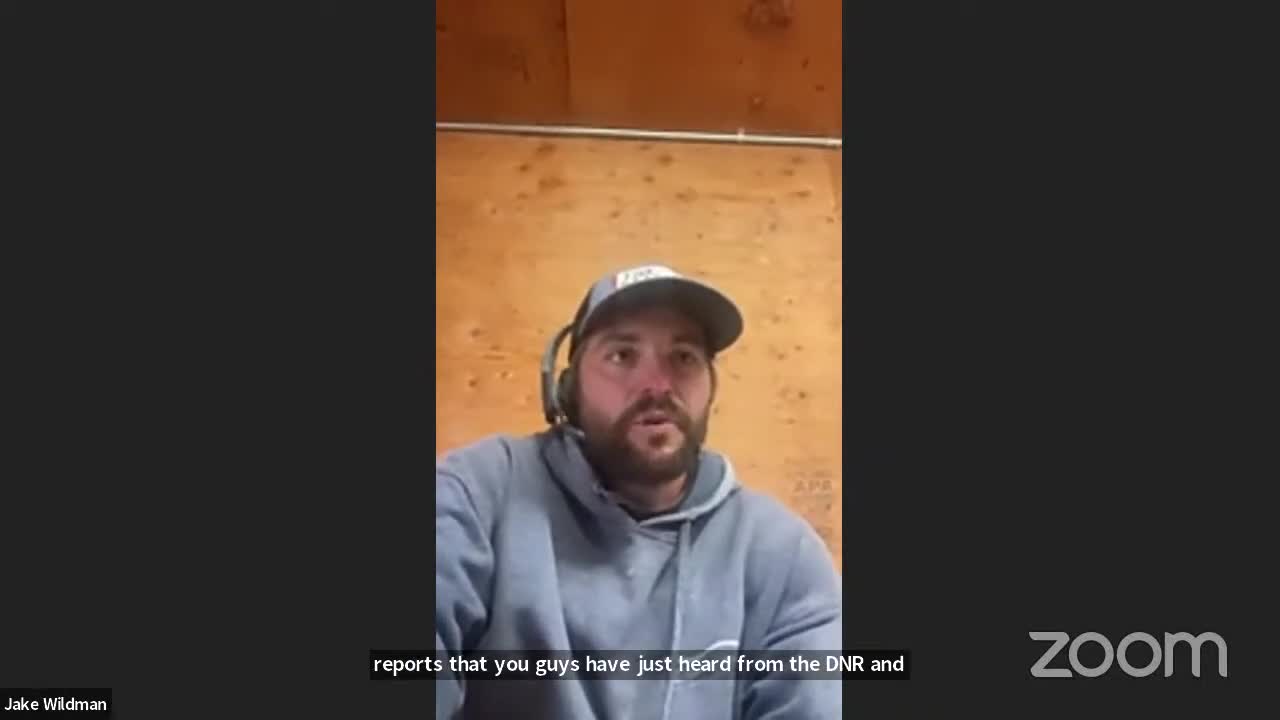Lake advocates flag wakeboard boats as shoreline, AIS and sediment risks; call for science‑based training and local rules
October 25, 2024 | Subcommittee on Minnesota Water Policy (SMWP, Departments, Joint, Committees, Legislative, Minnesota
This article was created by AI summarizing key points discussed. AI makes mistakes, so for full details and context, please refer to the video of the full meeting. Please report any errors so we can fix them. Report an error »

Jeff Forster, executive director of Minnesota Lakes and Rivers Advocates, briefed the Subcommittee on Oct. 24 on two priorities: increasing stable funding for aquatic invasive species (AIS) management grants and addressing shoreline and AIS risks posed by wakeboard/wake‑surfing boats.
On AIS funding, Forster said the current three‑year boat surcharge supports local AIS management grants but funding is unstable from year to year. Advocates are seeking a higher, steadier surcharge and estimate that lake associations face rising, sometimes unsustainable management costs. Forster said the group will advocate a $25 three‑year registration surcharge (up from the current $10.60) to support long‑term AIS prevention and local management grants.
On wakeboard/wake‑surf boats, Forster summarized initial science from the St. Anthony Falls Laboratory and DNR‑funded studies: specialized wake boats create wakes much larger than conventional runabouts and can produce strong propeller thrust that resuspends sediments and damages shallow aquatic vegetation. A lab study cited by Forster found wakes from enhanced wakecraft must travel roughly 500 feet to dissipate to the energy of a typical runabout’s wake; prop thrust and ballast tanks increase the risk these craft pose for aquatic invasive species transport because ballast tanks retain residual water and organisms.
"They are a significant transporter of aquatic invasive species," Forster said, summarizing DNR findings on ballast retention and veliger survival. He said the advocates' near‑term solution is a science‑based operating and certification program — including buffer distances from shore (roughly 500 feet) and minimum depths (about 20 feet) — plus education, AIS prevention measures and local ordinance options where warranted. He noted the DNR is drafting training modules and that local ordinances (approved by DNR) are another enforcement path; Wisconsin has seen more than 30 local ordinances regulating wakeboats.
Ending: Forster encouraged the committee to support steady AIS grant funding, adopt science‑based operating guidance, and consider local ordinance tools as needed; no new law was adopted at the meeting.
On AIS funding, Forster said the current three‑year boat surcharge supports local AIS management grants but funding is unstable from year to year. Advocates are seeking a higher, steadier surcharge and estimate that lake associations face rising, sometimes unsustainable management costs. Forster said the group will advocate a $25 three‑year registration surcharge (up from the current $10.60) to support long‑term AIS prevention and local management grants.
On wakeboard/wake‑surf boats, Forster summarized initial science from the St. Anthony Falls Laboratory and DNR‑funded studies: specialized wake boats create wakes much larger than conventional runabouts and can produce strong propeller thrust that resuspends sediments and damages shallow aquatic vegetation. A lab study cited by Forster found wakes from enhanced wakecraft must travel roughly 500 feet to dissipate to the energy of a typical runabout’s wake; prop thrust and ballast tanks increase the risk these craft pose for aquatic invasive species transport because ballast tanks retain residual water and organisms.
"They are a significant transporter of aquatic invasive species," Forster said, summarizing DNR findings on ballast retention and veliger survival. He said the advocates' near‑term solution is a science‑based operating and certification program — including buffer distances from shore (roughly 500 feet) and minimum depths (about 20 feet) — plus education, AIS prevention measures and local ordinance options where warranted. He noted the DNR is drafting training modules and that local ordinances (approved by DNR) are another enforcement path; Wisconsin has seen more than 30 local ordinances regulating wakeboats.
Ending: Forster encouraged the committee to support steady AIS grant funding, adopt science‑based operating guidance, and consider local ordinance tools as needed; no new law was adopted at the meeting.
View full meeting
This article is based on a recent meeting—watch the full video and explore the complete transcript for deeper insights into the discussion.
View full meeting
